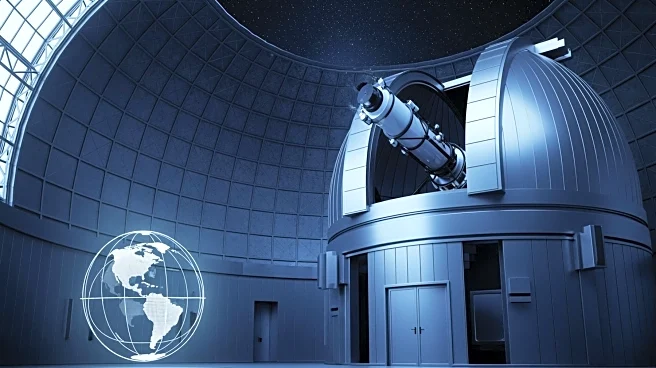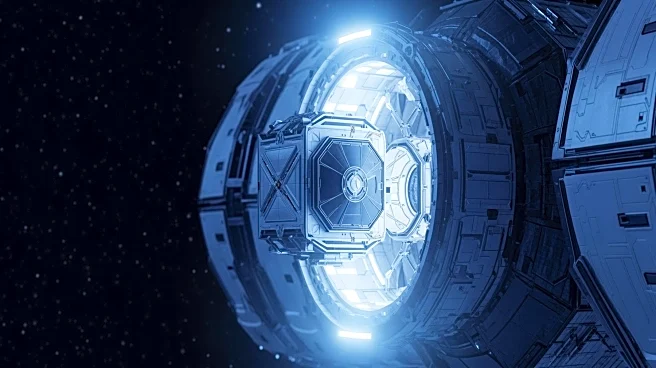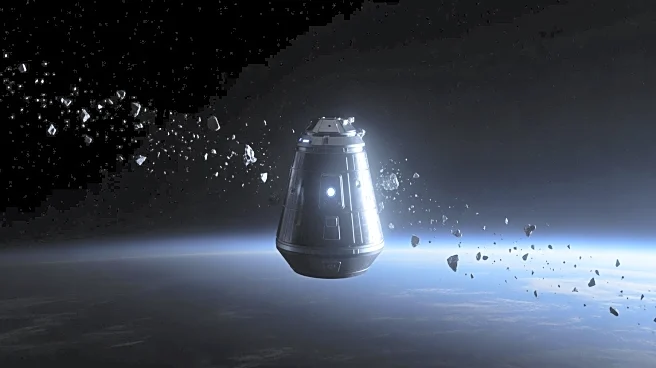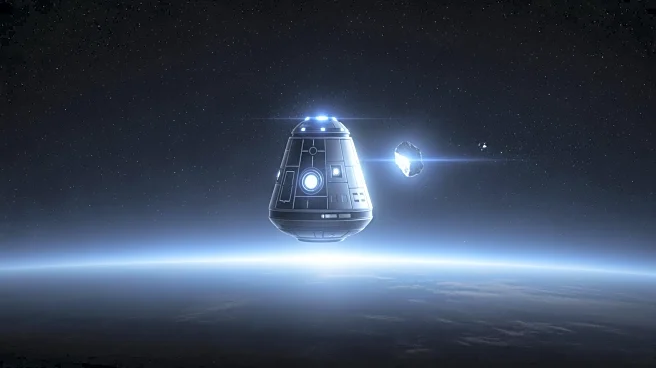What's Happening?
China has launched the uncrewed Shenzhou 22 spacecraft to the Tiangong space station to provide a return vehicle for three astronauts currently aboard. The launch took place on November 24, 2025, using
a Long March 2F/G rocket from the Jiuquan Satellite Launch Center. The astronauts, part of the Shenzhou 21 mission, have been without a return vehicle since their original spacecraft was used to bring the previous crew home due to safety concerns. The Shenzhou 22 mission aims to dock with Tiangong and allow the current astronauts to complete their mission safely. This development follows a similar incident involving Boeing's Starliner spacecraft, which faced issues during its mission to the International Space Station.
Why It's Important?
The successful launch and docking of Shenzhou 22 are crucial for ensuring the safety of the astronauts aboard the Tiangong space station. This mission highlights China's growing capabilities and ambitions in space exploration, as well as the challenges of maintaining human presence in orbit. The incident underscores the importance of reliable spacecraft and contingency planning in space missions. It also reflects the competitive dynamics in space exploration, with China advancing its space program amid international efforts, including those by NASA and private companies like SpaceX.
What's Next?
If Shenzhou 22 docks successfully, the astronauts will continue their mission until relieved by the Shenzhou 23 crew, expected to launch in April 2026. The damaged Shenzhou 20 capsule will remain in orbit for experiments before being decommissioned. This situation may prompt further evaluations of spacecraft safety protocols and influence future mission planning. The incident could also lead to increased collaboration or competition among international space agencies as they address similar challenges.
Beyond the Headlines
The Shenzhou 22 mission highlights the risks associated with space debris and the need for improved monitoring and mitigation strategies. As space becomes increasingly crowded, the potential for collisions and damage to spacecraft grows, necessitating international cooperation on space traffic management. This event may also influence public perception of space travel safety and the technological advancements required to ensure astronaut safety.














